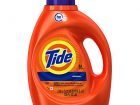Last night over a good glass of wine, food and a dose of marketing and sales brainstorming with a client and friend the conversation headed down the road of fees, costs and pricing. My client has been battling a sales force already battered down by a sluggish economy that wants to make deals or downward adjustments in pricing in order to attract more business. And he was almost willing to give in to the whining and noise of the sales force. I think our conversation helped him realize that there are better ways to compete than simply on price.
When a company makes price the ultimate marketing or sales tactic, it simply diluting its brand and setting itself up to fail. Once a product or service is sold solely because it had the lower or best price, that’s the stake in the ground. All future negotiations with current and new products will always be price driven. With lower prices come lower margins. With lower margins the company is pinched in a way that future innovation, service and products will be compromised.
Worst, in the mind of the customer, you are simply a “go to†for a lower price. Is that what you want?
When companies resist the crying of sales people to cut deals and lower prices and focus on building and creating value, the image in the mind of the customer is much different.
“But we need this customer,” I’ve heard salespeople trying to persuade their managers, “if we just get this one deal, we’ll have a loyal customer,” they’ll reason. But how good is a customer that will only buy from you because you are the low price? Sounds like a relationship that will ultimately go south when another low price company wants to lure and reign in a customer ‘it needs.”
I told my client perhaps the best thing he could do with his salespeople is to announce a new pricing structure—one that has higher prices. If you could’ve seen his expression as he nearly spilled a fine 2001 Napa Cabernet all over my dining room table. I caught the glass, but he didn’t catch my drift—right away.
I explained that he needed to start selling value. “You get what you pay for,” is an adage we all know — and perhaps despise. But it’s true. Instead of lowering prices, how about fixing prices to value? I’m not talking just raising prices for the sake of raising prices. I explained that it’s important to not be the lowest price bidder, but it’s not so bad to be the highest, either, though it’d be better to be in the top third in pricing. In the mind of the client the highest price has a certain draw, or even mystery. Think about it. The price doesn’t have to be so much higher that it’s ridiculous. Rather it should be within 10-20 percent. The customer would likely want to purchase from the high price, but in the name of prudence and discipline, he or she cannot pull the trigger on the high bidder without good reason.
But if the customer pulls the trigger on the low cost bidder and something goes wrong, chances are the cost to recover will be far greater than the difference in price between original high and low bidder. No customer wants to fall into the trap of buying low but losing due to lack of service, quality or delivery. The low price bidder is in a losing position always.
Whole Foods is a national specialty goods retailer that focuses on service, quality, diversity and unique product availability. When other grocers are publishing weekly sales fliers highlighting steep price discounts, Whole Foods focuses on the customer experience and unique products—value and customer needs over pricing.
Higher fees, pricing or costs do need to be justified. That’s where building a stronger brand and with it value and equity. So the next time your sales team wants to compete based on price, resist the draw to fall into the trap because you’ll fall and keep falling and find extreme difficulty in getting out.
On the other hand, here are a few ways to build value and justify higher costs:
Five Ways Build More Value And Avoid Cutting Product/Service Prices
- Bundling. This is nothing new, but instead of deducting dollars off pricing, simply add value by offering a bonus product with purchase, one of your products. Or provide extra value by bundling a suite of products at a discount. Never discount a single product.
- Delivery. Free delivery is the rage, but you get what you pay for. Don’t offer free delivery, how about an upgrade from standard (read: long time) shipping to expedited shipping: overnight or two day
- Gift With Purchase. The cosmetic and fragrance companies have this down to an art. Sure the aromatic oils costs $500/oz, but look at gifts we’re giving you handbag, lotions, creams, etc. Today the rage is offering a free iPad with purchase on bigger ticket items. But you can offer gift certificates, airline tickets. a discount coupon on future order. All these things keep your pricing standard but provide a promotional angle to lure your customer away from lower priced bidders.
- Upgrade. If you have a good, better, best or extra features, support or maintenance packages, use these as a free upgrade so the customer gets more value for the same price. Plus, you tie a customer in tighter to your company and its offerings. And you’ve given the customer something the competition cannot.
- Use Loyalty/Affinity Programs. This is a no-brainer. If your product is a recurring purchase for your customers, set up a frequent buyer program and use rewards to thank loyal customers. Another good reason to buy from you. If your product works with other products or benefits from related services, set up affinity programs with partners and other businesses. With the purchase of your product the customer is enrolled in an affinity program that gives them access to discounted products/services. This one requires additional marketing support, but can be a way to build value and differentiate your offering from others. Be creative and establish strategic relationships that provide incentivized cross-selling programs.
Bonus: Five Ways To Sell On Value Without Promotional Consideration
- Product quality
- Customer Service
- Delivery
- Access to senior level managers
- Customization
- …etc.
My client called me after his sales meeting this afternoon. Most of his sales team gets this. Some just don’t, and likely will never understand the importance to holding firm on pricing but working on strengthening the customer relationship and experience through value and commitment. For those, perhaps there are other places in the organization better: perhaps purchasing.
Each company, product, service and individual is different. Key is to look closely at what you have and develop a strong message platform for sales that focuses on value and relationships. With this in place you shouldn’t have to compete based solely on price—ever.
Let me know what your company does to sell and deliver on value, rather than price.





So true! I like the way you think!
As someone in sales I have seen this in my industry. We have continued to stay true to the quality/cost of services that we offer. While we at times lose opportunities to our competition, almost 90% of the time the business returns to us! We stay true to the end product produced, the added service offered, relationship building and that the client can above all trust that we are looking out for them. What does this mean to us? We didn’t lose out in this economic challenge; we retracted, evaluated and grew!
Tim Williams of the Ignition Group has a great presentation entitled “Getting Paid for Value instead of Time.” I have riffed off this presentation with my own agency team to help us get better as an agency in selling our value and not getting beat down based solely on rates. Williams suggests looking at the following:
If price wasn’t an issue, what role would you want us to play in your business?
How do you measure success?
What is it now?
What would you like it to be?
What’s the value of the difference?
His preso is at: Getting Paid For Value Instead of Time http://slidesha.re/70Js3m
@ Curt = Great points. When in front of the customer best thing to do is move beyond the price discussion, I like the points you’ve made here. And thumbing through Tim’s slides are hugely important to those of us who bill “by time” or “for ideas” even as Tim puts it “Business Results”. Unlike product-focused businesses where inventory sits on the balance sheet until its either sold. For those in the agency and other service-based business we wake up in the morning with 8 hours of inventory. When we leave the office, those hours are gone, never to be sold again. So not only is that a vicious circle of scrambling to bill hours, it diminishes value of the work that is delivered to the client.
There’s a great story that involves Pablo Picasso and a ‘logo’ design. And I’ll have to save that story for another post, but in short not only are we billing for results, we are offering expertise and experience — the sum of which is what creates value for the client.
@Darice Good points and so glad your team is on board and you’ve found that when you didn’t cut your price, your client still returned based on those tangible added benefits that offer value!
Excellent article Alan and well said! I have passed it on to my salespeople as lowering the price seems to be the go to position more often than not. I try to teach them but perhaps if they hear (read) this from somebody other than Daddy, they will take note! Thanks for sharing.